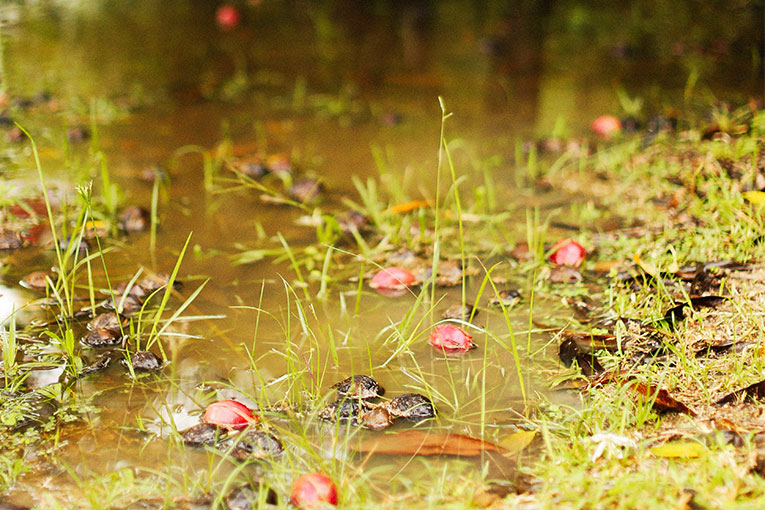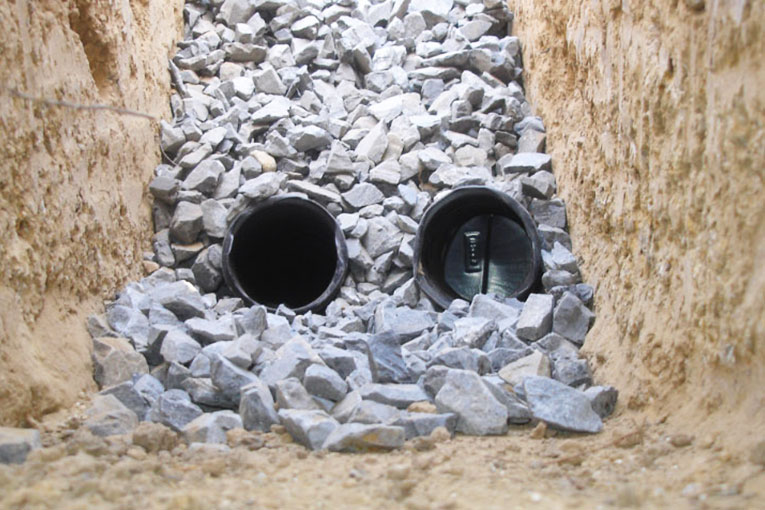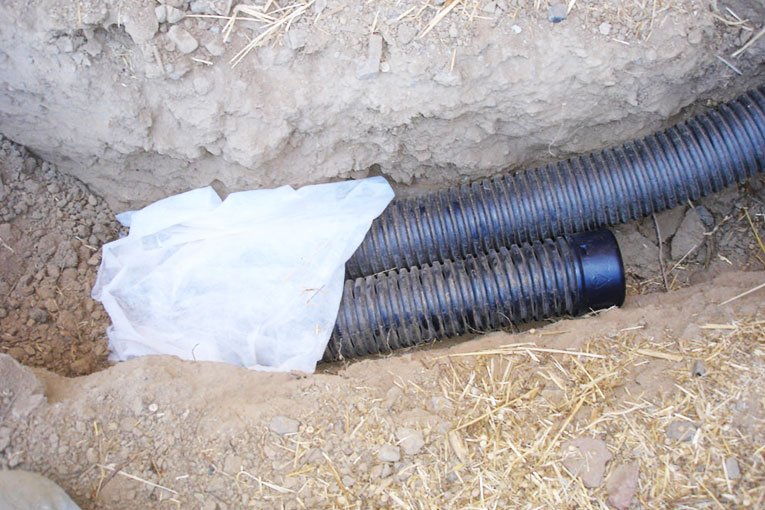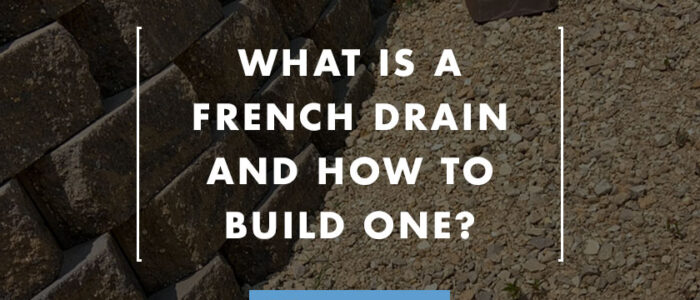What is a French Drain & How to Build One
A French drain is a versatile and practical solution for managing water runoff and preventing waterlogging in various settings.
Whether you’re dealing with water accumulation around your home’s foundation, a soggy yard, or a waterlogged basement, a French drain can be the answer to your drainage woes.
In this article, we will delve into the world of French drains, exploring what they are, how they work, and why they are an ideal choice for water management.
You will learn about the advantages of French drains, such as protecting your property from water damage and preserving the structural integrity of your buildings.
Additionally, we will discuss the disadvantages, helping you make an informed decision based on your specific needs and circumstances.
While French drains are undoubtedly effective, they might not be the best fit for every situation.
We will explore alternative drainage solutions, such as dry wells, swales, and rain gardens, providing you with a range of options to choose from depending on your unique needs and preferences.
Whether you’re a seasoned DIY enthusiast or a homeowner looking to protect your house and help with waterlogged gardens, this article aims to equip you with the knowledge and confidence to create a reliable and efficient drainage system.
Let’s get started on building a French drain that will safeguard your property from water-related woes and improve the overall health and longevity of your living space.
Article Chapters
What is a French Drain?
A French drain is a simple and ingenious drainage solution designed to combat water accumulation and prevent water damage.
It consists of a trench filled with gravel or rock and topped with a perforated pipe. The trench is strategically placed in areas prone to waterlogging, such as around the foundation of buildings, yards, or low-lying sections of the property.

French drains help waterlogged gardens
The functionality of a French drain lies in its ability to direct water away from the problematic area.
When rainwater or excess moisture comes into contact with the ground, it begins to seep through the gravel or rock in the trench.
The perforated pipe, located at the bottom of the trench, allows the water to flow into it. Once inside the pipe, the water is channelled away from the area, preventing it from pooling and causing damage.
One of the key features of a French drain is its underground installation.
By burying the drain beneath the surface, it remains unobtrusive and doesn’t interfere with the aesthetics of the landscape.
This discreet design allows it to efficiently tackle water drainage without being an eyesore.
French drains are highly versatile and can be adapted to suit various situations and terrains.
They are particularly effective in areas with poor soil drainage or where water tends to accumulate.
By installing a French drain, you can protect your home’s foundation from water-related issues, improve basement drainage, and maintain a dry and functional garden.
Advantages of a French Drain
French drains serve as effective tools to combat waterlogging by efficiently redirecting water away from areas prone to excess moisture.

An example of a French drain
By creating a clear pathway for water to flow, these drains significantly reduce the risk of water accumulation around buildings, yards, and other spaces susceptible to flooding.
Protects Foundations
One of the most critical functions of a French drain is to protect building foundations from water-related damage.
When water is allowed to pool around a structure’s base, it can seep into the foundation, causing cracks and weakening its integrity.
By keeping water away from the foundation, French drains act as a protective barrier, safeguarding the structural stability of buildings.
Easy Installation
The installation process for French drains is relatively straightforward and can be accomplished with basic tools.
This simplicity makes it a viable option for homeowners and property managers looking for a practical and efficient drainage solution.
With proper planning and execution, the drain can be quickly implemented to mitigate potential water-related issues.
Cost-effective
Cost-effectiveness is another significant advantage of French drains.
Compared to other drainage solutions, such as installing complex underground systems or modifying the landscape’s contours, French drains are often more budget-friendly.
Their straightforward design and ease of installation contribute to reducing overall expenses without compromising on performance.
Adaptable and Customisable
French drains can be customised to suit different property sizes and shapes, making them versatile and adaptable to various situations.
Whether your property has limited space or specific terrain challenges, a French drain can be tailored to fit your needs.
Disadvantages of a French Drain
French drains may seem like a perfect drainage solution to every property, however they can have some downsides to keep in mind.
Maintenance
Regular maintenance is essential to keep French drains functioning optimally.
Over time, debris, such as leaves, soil, or sediment, can accumulate in the gravel-filled trench or around the perforated pipe, hindering water flow.
To prevent clogging and maintain the drain’s efficiency, periodic cleaning is necessary. Regular inspections can help identify any potential issues and ensure the drain remains clear and free from obstructions.
Limited Capacity
While French drains are effective at managing typical rainfall and moderate water volumes, they may have limitations during heavy rainstorms or when dealing with large amounts of water.
In such cases, the drain’s capacity might be overwhelmed, leading to temporary pooling of water.
It is essential to consider the drainage needs of your property and the expected water volumes when designing a French drain to ensure it can handle the anticipated flow.
Design Considerations
Proper design and planning are crucial when installing a French drain.
Factors such as the slope of the terrain, soil type, and proximity to buildings or utility lines must be carefully considered.
A poorly designed or improperly installed French drain may not effectively divert water or may cause unintended water damage to structures or landscapes.
Seeking professional guidance or consulting with a drainage expert can help ensure the drain is appropriately designed for your property’s specific conditions and requirements.
Property Regulations
Property owners need to be aware of local regulations and obtain any necessary permits before installing a French drain.
Some areas may have specific guidelines or restrictions regarding drainage systems to ensure they do not adversely impact nearby properties or the environment.
By adhering to local regulations and obtaining the required permits, you can avoid potential legal issues and ensure that your French drain is compliant with all relevant standards.
How to Build a French Drain
Building a French drain involves several steps to ensure its effectiveness:
Planning
The first step is to identify the problem area where water accumulates and causes issues.
Determine the optimal route for the French drain to redirect the water away from the problem spot.
Choose a safe exit point where the water can be channelled away effectively.
Excavation
Once the route is planned, it’s time to dig a trench along the determined path.
The trench should have a gentle slope away from the problem area to ensure proper water flow.
The depth and width of the trench will depend on the specific drainage needs of the area, such as the volume of water to be drained.
Laying the Pipe
Place a perforated pipe inside the trench, ensuring that the holes are facing downward.
The perforated pipe is a crucial element of the French drain, as it allows water to enter the drain while keeping soil and debris out.
Carefully position the pipe to maintain the proper slope of the trench for effective drainage.
Adding Gravel
Fill the trench with coarse gravel or crushed stone, leaving enough space to completely cover the perforated pipe.
The gravel acts as a stable and porous medium for water to flow through.
It helps to distribute the water evenly along the length of the drain and prevent waterlogging.
Filter Fabric
Before filling the trench completely with gravel, lay filter fabric over the gravel layer.

French drains need filter fabrics placed on top of the pipes
The filter fabric serves as a protective barrier that prevents soil particles from clogging the drainage system over time.
By keeping the gravel and pipe clear of debris, the filter fabric ensures the drain’s long-term efficiency.
Finishing
Once the filter fabric is in place, add the remaining gravel to fill the trench entirely. Ensure that the perforated pipe is well-covered by the gravel layer.
Finally, replace the soil or sod over the top of the trench to restore the area’s appearance and blend the French drain into the surrounding landscape.
By following these steps diligently, a well-built French drain can effectively address water drainage issues, preventing water accumulation and potential damage to properties.
It’s essential to consider the specific characteristics of the problem area and tailor the French drain installation to meet the drainage needs of the property accurately.
If unsure about the installation process, seeking advice from a professional landscaper or drainage expert can ensure a successful and efficient French drain system for your property.
How Much Does a French Drain Cost to Build?
The cost of building a French drain can vary depending on several factors, including the length of the drain, the depth of the trench, and the materials used.
Additionally, the complexity of the drainage project and labour costs in the specific region can also influence the overall expense.
On average, the cost of a French drain installation can range from £10 to £25 per linear foot.
For a standard residential property, the total cost can typically fall within the range of £1,000 to £5,000.
However, for more extensive or complex drainage projects, the cost can exceed this range.
The primary cost factors include the length of the drain, as longer drains require more materials and labour, and the depth of the trench, which affects the amount of excavation work involved.
The choice of materials for the drain and the quality of the perforated pipe and gravel used can also impact the overall cost.
Moreover, if additional landscaping work is required, such as reseeding or sodding the disturbed areas, this may add to the total cost of the French drain installation.
While the initial cost of building a French drain may seem significant, it’s essential to consider the long-term benefits it provides.
A well-designed and properly installed French drain can effectively prevent water damage and protect the foundation of your property.
It can save you from costly repairs caused by waterlogging and moisture-related issues.
Alternatives to French Drains
When it comes to managing excess water and drainage issues, French drains are not the only solution available.
Depending on the specific needs and conditions of your property, several alternative drainage methods can effectively redirect water and prevent waterlogging.
Here are some popular alternatives to French drains:
Dry Wells
Dry wells are underground reservoirs designed to collect and hold excess water, allowing it to slowly disperse into the surrounding soil over time.
These wells are an excellent option for areas with poor drainage or where traditional surface drainage methods are not feasible.
Swales
Swales are shallow, graded ditches or channels that are strategically designed to redirect water away from areas prone to waterlogging.
They are typically contoured to encourage water flow to designated drainage points or natural watercourses.
Swales can be an eco-friendly and visually appealing alternative to French drains.
Rain Gardens
Rain gardens are aesthetically pleasing landscaping features designed to capture and filter rainwater runoff.
They consist of shallow depressions planted with native vegetation that can absorb excess water, allowing it to infiltrate into the soil and naturally recharge groundwater.
Rain gardens not only address drainage issues but also provide habitat for beneficial wildlife.
Permeable Pavers
Permeable or porous pavers are an innovative hardscape option that allows rainwater to pass through the surface and infiltrate into the ground below.
They are an excellent alternative to traditional impermeable surfaces like concrete or asphalt, which can contribute to runoff and water pooling.
Retention Ponds
Retention ponds are large, engineered basins designed to hold and temporarily store excess water during heavy rainfall events.
These ponds gradually release the stored water into the environment, reducing the risk of flooding and alleviating pressure on drainage systems.
Trench Drains
Trench drains are surface drainage systems with a long, narrow trench that collects and redirects water away from specific areas.
They are commonly used in commercial and industrial settings but can also be suitable for residential properties with specific drainage needs.
Before deciding on an alternative drainage solution, it’s essential to assess the specific drainage requirements of your property and consult with a professional landscape designer or drainage expert.
They can help you determine the most appropriate and effective solution to address your drainage concerns.
Each alternative comes with its unique benefits and limitations, and the choice will depend on factors such as the topography of your property, the severity of the drainage issue, and your aesthetic preferences.
By selecting the right drainage solution, you can maintain a healthy and functional landscape while effectively managing water flow and preventing water-related damage.
Conclusion
A French drain is a versatile and effective drainage solution that can significantly improve the management of excess water on your property.
Its simple construction and cost-effectiveness make it an attractive option for many homeowners and property owners seeking to address drainage issues.
By redirecting water away from buildings and foundations, a French drain helps protect structures from potential water-related damage, ensuring a drier and more secure environment.
Consulting with a professional landscape designer or drainage expert can be instrumental in making an informed decision.
They can assess your property’s drainage requirements, evaluate the feasibility of a French drain, and recommend the most appropriate alternative if needed.
Taking a comprehensive approach to your property’s drainage needs will ensure that you select the best solution that effectively mitigates water-related problems.
In the end, whether you opt for a French drain or another drainage alternative, the goal remains the same – to prevent water accumulation and protect your property from potential water damage.
By making an informed decision and implementing the most suitable drainage solution, you can create a drier, healthier, and more secure environment for your home or business.


Comments are closed.